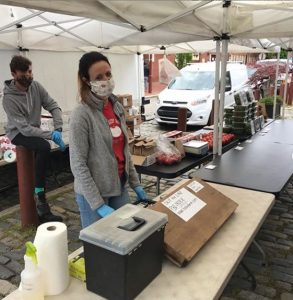 We have been watching as the state executive orders continue to roll out and how this impacts the agricultural community. The two key take-aways for farms this season are:
We have been watching as the state executive orders continue to roll out and how this impacts the agricultural community. The two key take-aways for farms this season are:
- Ensure that your customer capacity limits allow for 6′ of social distancing
- Communicate to customers that masks will be required when indoors and when social distancing isn’t possible out of doors
Guidance documents have been updated on the following topics
U-Pick Operation Guidelines under COVID-19
RCE Wholesale Grower Questions
Best Practices for Direct Market Sales
Complying with NJ Executive Orders – Pick Your Own
The Rutgers On-Farm Food Safety Team now has a COVID-19 Information For the Agricultural Industry webpage where these updated documents are housed, along with other COVID resources and vaccine information including printable posters in multiple languages.
